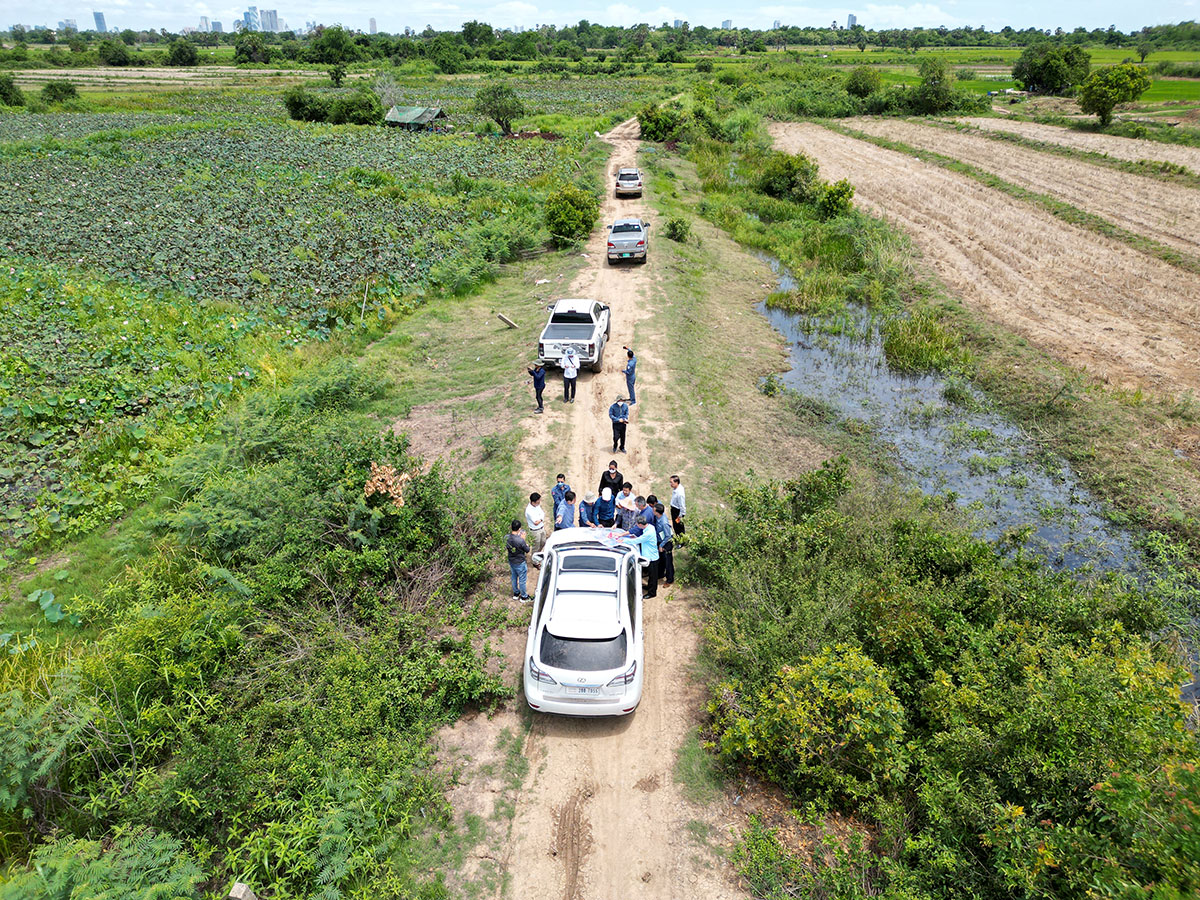Resilient Urban Centres and Surrounds (RUCaS)
Akreiy Ksatr Wetland City
Phnom Penh, Cambodia
The vision of this case study is to implement a Wetland City approach to urban planning in the new Akreiy Ksatr municipality, where urban design adapts to the location on the Mekong River floodplain.
What does a Water Sensitive City look like?
Akreiy Ksatr is a new municipality being planned across the Mekong River from Cambodia’s capital Phnom Penh. The area features many characteristics typical of Cambodian communities, including local markets, temples (wats) and pagodas and amenities such as schools and government offices. As with many riverside urban locations, development occurs alongside expansive wetlands that feature heavily in agricultural and fishing practices. These wetlands also have a critical function in managing seasonal flooding from the Mekong River. Numerous natural lakes and low-lying land serve as storage basins and flood mitigation measures. They are also valuable habitats for a range of biodiversity.
In recent years, Akreiy Ksatr has expanded rapidly, as residents of Phnom Penh move across the river in search of increased space and respite from the capital. This urbanisation has been largely unstructured, with limited municipality-wide urban planning, and infrastructure being constructed on an ad-hoc basis.
The RUCaS team is collaborating with the Ministry of Land Management and Urban Planning and Construction and the Akreiy Ksatr Provincial Government to assess options, and to identify pathways and principles for advancing nature-based solutions (Nbs) into the planning processes.
This case study proposes building a new city to work within a functioning floodplain, presenting a vision for Asia’s first new wetland city on the Akreiy Ksatr floodplain. The Wetland City approach integrates urban activities with natural processes and seasonal changes in the wetland environment, to retain the flood and drought mitigation properties of the surrounding topology and to pioneer an approach to reducing other linked issues found in cities across the Mekong. It stresses the importance of floodplain ecology to Akreiy Ksatr and as a remnant environment for greater Phnom Penh, and the connection between forested areas, the river, floodplain, fishing and agricultural production and economy, and preservation and value of associated biodiversity.
While the Wetland City approach is intended to be applied at a wider scale, the case study uses Prek Luong High School as a building scale example of how this concept can deliver benefits for the wider community, and model NbS at a local scale. The school contains several unused and derelict buildings, which are planned to be demolished and rebuilt (funds permitting) in a similar style to the rest of the school. The case study explores the costs and benefits of designing the replacement buildings to align with the Wetland City concept, including integrating NbS. It presents a vision that connects young people to nature positive design options.
Technical section for Akreiy Ksatr (not to scale and illustration only)
The CRCWSC has produced research, guidelines and
tools related to the following topics:
Integrated Urban Flood
Management
Climate change
mitigation
Community
engagement
Economics and
business case





